Leica M 50mm lens comparison: 10 fast options - Part 1. Introductions
My journey with Leica has been a rollercoaster. An exciting, fun one.
This website is named after the angle of view of my favourite focal length: 50mm. That is the desert island lens for me. But in which form? Ultrafast bokeh monster? Small great quality all-rounder? Anything in between?
When I bought my Leica M I came from APS-C. I didn’t buy the full frame Leica M for the sensor format, but for the rangefinder experience. I sold a full kit of excellent, autofocus, versatile gear and plunged in the weird and wonderful world of limitations of the manual, feature and gimmick free Leica M. I don’t regret it at all, I just wish I had done it sooner. My photography improved, my pleasure in the photographic process went up a notch. I shot way more.
The first lens I sought was, of course, the 50mm. But unfortunately I had two main issues: I could not afford a Leica 50mm and I had a bad case of the bokeh disease. I got myself a Voigtlander Nokton 50mm 1.1, the fastest thing I could afford. And hardly ever stopped it down. That certainly didn’t help my photography, and I soon found out how big and cumbersome that lens was. Of course I had to find a lighter, smaller alternative to that behemoth to have the option of a smaller kit. Enter the Voigtlander Nokton 50mm 1.5. But there was the Zeiss Planar F2 beckoning to me, asking me to try it out. And what about that Zeiss Sonnar 50mm 1.5? Fast and small, but with a lot of focus shift apparently…I really fancied the Leica Summilux 50mm 1.4 ASPH, but that was way out of my league.
From there it’s been a buy and sell whirlwind, not being able to find my ideal lens. A good photographer friend of mine has all but given up in trying to keep up with my changes: every time we go shoot together my lenses have changed!! Hello Fred!
Recently Voigtlander announced the Nokton 50mm 1.5 II, and that was exactly what I was looking for: small, high quality fast 50mm prime lens with good ergonomics. I decided to get it as soon as possible and review it. But what about comparing it to the predecessor, of which I have owned now 5 or 6 copies? Yep, you read that right: great lens, horrible ergonomics - tried to bond with it many times, failed each time!
But at that point I thought: why not compare all current Noktons? Scouring the auction site and used gear shops led me to an excellent price on a Leica Summicron version 5. Let’s add that to the comparison, together with the Zeiss Planar I already have! Things spiralled out of control, and now I find myself with 10 current production fast 50mm prime lenses for Leica M mount, from F2 to F1.1. Here is my comparison: enjoy!
Index for this page:
Minimum Focusing Distance (MFD) and magnification
Let’s start.
The participants
In order of speed these are the lenses reviewed here: this is the only instance in which I will write down the full name of these lenses, as best as I can find (Voigtlander name their lenses with different full denominations in either lens front ring, box and website for each lens, and each lens is designated slightly differently on top of that…crazy!).
The first thing I notice is that Voigtlander hasn’t figured out a naming standard for its lenses. At all. Leica and Zeiss have very clear ideas about what to call their lenses, and so do the two Chinese companies, that use simple and clear denominations. For this reason, and for simplicity, throughout the article I will refer to the lenses just by their rather funny designation (like Summicron, Summilux, Nokton), design name (Sonnar, Planar) or plain brand (7Artisans, TTArtisan) plus the aperture. We’ll have the Nokton 1.5, for example, Summilux 1.4, TTArtisan 1.4, Planar F2, Nokton 1.5 II for the newest kid on the block, and so on.
This is part 1 of a series of long articles: sit back and enjoy your drink of choice.
Handling and ergonomics
These two parameters are among the most important ones for me to choose a lens: if I don’t forget the camera and lens while shooting and end up fumbling with the gear I can’t concentrate on the most important part of photography, crafting the image. For the gear to “disappear” in your hands the handling and setting changes must become second nature. If you don’t get along with the gear and its ergonomics this gets more difficult and distracting.
The main parameters for me are focus mode (ribbed ring or tab), focus ring resistance and smoothness, aperture ring firmness, ease of distinction between focus ring and aperture ring, weight and balance on camera, lens hood shape, size and ease of attachment/removal, viewfinder blockage, other details.
Let’s dive in.
Voigtlander Nokton 50mm 1.1
This was my first lens for the Leica M system. It’s a bit chunky. Quite chunky, actually! It comes only in black and has a hood included in the box. In this sample the hood was missing, so I used a vented one I already had that has a similar size to the original one, which is not vented. And I have a problem with that: why not vented? This lens protrudes enough in the viewfinder as it is, why add a solid hood to that? Anyway, the lens is made of aluminium alloy and feels solid and well built. It sports 10 straight aperture blades, that stop down to F16. The aperture ring is easy to find, I never got confused with the focus ring although they are close and similar, and it clicks positively and precisely, it doesn’t get knocked off your chosen value easily. the focus ring is scalloped and knurled, really comfortable and it allows for a good grip. The focus travel seems to be just over 90 degrees, which makes it fast focusing. It works fine for me, but some people prefer longer travel for fine tuning the focus. I always found this lens easy to focus precisely with the rangefinder. The weight of 428g and size of the lens, which is 57mm long and 69.6mm wide, are the main drawbacks on a Leica M. The viewfinder blockage is quite severe and the camera is very front heavy.
7Artisans 50mm 1.1
This lens made quite a splash in the Leica M system community when it landed: so much speed for so little money? Is there a catch? We will see through the testing, but first let’s see how it handles. It comes without a hood and there is no official option for one as far as I know. Easy enough to source one from the auction site, it screws on the 55mm filter thread. The lens is a bit smaller than the Nokton 1.1 but shares the same aperture value. It is made of aluminium alloy and feels very solid, far from cheaply built. Differently than every other lens in this comparison, the 7Artisans has a sloping cam for rangefinder focusing instead of a cam that moves with the optic cell backwards and forward: this solution is known to be less precise throughout the focusing range on a rangefinder camera, but it’s cheaper to build. The rear of the optic cell protrudes a lot into the mount, like some older non tele centric wide angle lenses for the M system: this creates a very shallow angle for the peripheral light rays that could degrade the image and create colour shading. It protrudes so much that if the lens is focused at infinity it won’t fit on a standard rear lens cap, you need to focus it closer than the 4ft mark to be able to fit it! The focusing ring is knurled and easy to move through its 90 degrees travel, although the feel is not buttery: it’s slightly scratchy, but this does not hinder the precision or ease of focusing at all. The lens has 13 curved blades and the aperture is rounded till almost F1.4, but the angles between the blades are not defined till F4. A big issue I have with this lens is the fact that the aperture is not clicked: great for video, not for photography. I often change the aperture on the fly while shooting, keeping the camera to my eye and counting the clicks to know where I am going. Here it is impossible, also given the fact that the spacing between aperture values is very uneven: as an example, we have around 13mm between F1.1 and F1.4 and 3.8mm between F4 and F5.6. it would not be an issue for me had it been clicked, but this way you just have to get the camera off your eyes and look at what you’re doing. The other issue I have is the lack of a raised or highly visible dot for lens alignment when mounting it on the camera. Just a tiny red groove on the side of the lens flange, difficult to see normally and impossible to find in the dark. So you fumble trying to mount the thing on the camera. Why, I wonder? Anyway, the viewfinder blockage is quite moderate especially for the aperture. The weight of 398g makes it a bit front heavy although its length of 49.4mm limits the issue somewhat. A characteristic of this brand, shared with the other Chinese brand TTArtisan, is the fact that the lenses come with a small screwdriver and a flange that allow you to calibrate the lens to your camera’s rangefinder. Handy in my opinion, but only if you have a digital Leica M! Finally, this sample came already DIY coded as a Leica Noctilux-M 50 f/1.
Voigtlander Nokton 50mm 1.2
This is a lens I owned and used for quite a while. It is a wonderful piece of glass in the real world. I sold it because I was still looking for a smaller everyday 50mm prime lens to pair with it, and I want to have a versatile, do-it-all lens for my purpose without having to choose which and why I want to photograph with. The Nokton 1.2 is small and short for its specification: it is only 49mm long and 63.3mm wide, which makes the viewfinder blockage fairly marginal at infinity. But it can get intrusive with the hood mounted. The weight of 347g makes it hefty but not obnoxious and it handles well on the Leica M, with moderate front heaviness. The build is fantastic, it has a premium feel to it. The focus ring is scalloped and knurled and wonderful to handle, it has a travel of roughly 120 degrees with a dampened feel that is not as light as a Leica or Zeiss lens but that works really well, making it very easy to focus precisely. The aperture ring has a dampened feel with clicks that are not the snappiest but precise and work perfectly, never moving without intention. The aperture has 12 straight blades. On the controversial silver front ring is the bayonet mount for the hood, a design I love. The LH-10 hood option is ludicrous, just enormous. I am using the LH-8 hood option it shares with the Voigtlander Nokton 35mm 1.2 II and III, which has a much more balanced size. The controversy about the chromed brass filter/bayonet ring, a design choice shared with many Voigtlander and all Zeiss ZM lenses, revolves around the rare occurrence of some flare induced by reflections from the shiny metal and the visibility of this ring in window reflection shots. A filter or the lens hood will resolve the problem.
A few size comparison images for these ultra-fast lenses:
Leica Summilux 50mm 1.4 ASPH
This is the official fast lens option for the Leica M system. It’s the lens I always wanted to get, but I was never able to justify its cost. I’m very interested to see how it will perform next to a very stiff competition from the east but also from its slower sibling, the Summicron 50mm F2. The Summilux 1.4 was released in 2004 like the two Zeiss lenses in this comparison. One thing you notice straight away picking up this lens is how dense it feels. Now, density is not quality necessarily, and I don’t feel this lens is built any better than the Nokton 1.2. The lens hood, a slide-out and twist-to-lock design, is a feature I really like on this lens, but it is flimsy. It’s not feeling solid at all. This is not dependent on the fact that my copy has taken a knock on the front rim, slightly bending the filter ring and hood: this copy is not the only one I handled. The lens is made of aluminium alloy (there is a chromed brass option) and is quite heavy for the size: 335g (460g for the brass version!). The length of 52.5mm together with the weight makes it a bit front heavy, like the Nokton 1.2, but I never noticed it in use. The Summilux 1.4 is a slender lens with a diameter of 52mm for the barrel. The tab adds a bit of size but it’s not noticeable. Speaking of the tab, this lens has both focusing tab and knurled focus ring, giving the best of both worlds in my opinion. I’m not used to the focus tab and prefer a focus ring, but I can see the value in the tab giving a tactile index for the focus position and for fast focus racking. The focus ring travel is around 90 degrees and it’s reasonably easy to focus precisely. I say reasonably because there is a little issue that is renown in the Leica community: the Summilux 1.4 has a Floating Lens Element (FLE), or better a floating lens group, that moves independently of the rest of the optical cell to correct for close focus aberrations and focus shift. This architecture requires a second helicoid inside the lens and that makes the focusing actions less smooth. Apparently if you send your lens back to Leica in Wetzlar (new or used) they can make it a lot smoother. But why not smooth out of the box with that price? I also have a further complaint: every single Leica lens I tried, and this is no exception, has a little stiction in the focus movement: no problem when moving the focus ring through its travel, but as soon as you try some fine focus tuning there is a sticky sensation to it that makes tiny movements difficult. It sticks a bit and then releases, easily making you slightly overshoot. I can’t fathom why such expensive lenses have this problem. All the recent Leica lenses I tried do, and I tried (not in a shop, owned at some point) 7 built after the year 2000. None of the Voigtlanders, Zeiss, 7Artisans or TTArtisans I owned ever had the issue, and I owned probably 30 to 40 of those over time, built before and after the year 2000. It’s baffling, given the price difference. Same goes for the aperture ring: this sample is ok, slightly loose but it stays in place most of the time. On all the Leica lenses I had (including the older ones we get to 14-15) the aperture ring has been all over the place. Often too loose, especially on newer lenses. On all the other lenses from the Japanese and Chinese brands there is an impeccable consistency: every sample of the same lens has the same focus action with no stiction, same aperture ring resistance, usually nice and snappy (a bit looser on the LTM Nokton/Ultron lenses, but still consistent). How can this be? Unbelievable. Ok, rant finished! The Summilux 1.4 aperture has 9 inwardly curved blades that give ninja star shaped highlight bokeh balls when you stop down. Meh. In it’s defence it’s not the only one with such foible in this comparison.
TTArtisan M50mm 1.4
I published an in depth review already of this lens, but some of the testing I am doing in this comparison wasn’t done. There will be added value from this comparison, and I wanted any testing to be consistent with the other lenses, so some of the results will be a repetition. This lens really impressed me in my review. The question is: compared to what? This will be the answer. Will I be as impressed after this comparison? Most of the information will be available in the said review, but I will describe the lens here as I do the others. The handling of this lens is much the same as the Leica Summilux 50mm 1.4 ASPH, although it’s a bit longer and heavier: it weighs 399g and is 58.6mm long. The lens is made of aluminium alloy and it feels dense and well built, although there are plastic parts inside, like the aperture mechanism rails. The width of 57mm doesn’t add to the viewfinder blockage because the lens is tapered towards the front. Still, it blocks a generous part of the viewfinder especially at closer focusing distance. The hood I use for it, cylindrical and screw in, doesn’t add much blockage.There is no hood in the box and none provided as optional by the manufacturer. The dual focusing action, by tab and knurled focus ring, is quite dampened and ever so slightly scratchy but very smooth in use. Travel is just over 90 degrees and it’s easy to hit focus. The aperture, with 12 inwardly curved blades, has a knurled ring that’s easy to find and stays in place when set. The clicks that are not particularly positive and the dampening of the ring don’t make it my favourite but it does it job well. Like the 7Artisans cousin this lens can be calibrated at home using the provided screwdriver.
Let’s compare the size of the Summilux 1.4 to two main competitors we have seen already: the Nokton 1.2 and the TTArtisan 1.4.
Voigtlander Nokton 50mm 1.5
My history with this lens is tortured. Tales of love and hate. Delight and frustration. Who on earth thought this barrel design was a good idea? They stopped making lenses this way almost 70 years ago: there is a good reason! The ergonomics of the focus ring are horrible. Period. I would love to hear from anybody that owns or have owned the lens that can honestly tell me they would choose this ring instead of a knurled/scalloped one. Please let me know the reasoning behind that. I owned this lens 6 times now counting this copy. 6. Bloody. Times. Once it was the chromed brass version. I love the size, weight, balance, optics of this lens (the aluminium version). I hate the focus ring with a passion. This lens does not disappear in use. It keeps on whispering in my ear “I’m uncomfortable; I’m idiotic; I don’t work well” and guess what? It’s true! It’s an idiotic design! These lenses are tools to craft images, not paper weights. Looks only carry you so far, they have to work well and with good ergonomics. That is a resounding fail for me. Adding to the stupidity, the beautiful chromed brass version has even sharper edges on the focus ring. Even more uncomfortable. For £100 more. And now that we are on full rant mode, let’s talk about the lens hood provided with the lens: it’s a screw-on conical hood with no cut-out for viewfinder blockage. Right, now we have a much wider than needed hood that blocks the viewfinder pretty severely. Way to go. This is the second idiotic design choice for this lens. This is not cost cutting, the Chinese machined vented hoods cost £3 shipped: materials and CNC machining can’t be much more expensive than the original hood. But wait, there is more: this lens has no raised dot on the side of the barrel for alignment while mounting the lens on the camera. Nope. Too easy. You have to squint and look for a tiny groove on the side of the chromed lens bayonet , which is probably a couple of millimetres thick. At least the groove is filled with red paint. What happened to ease of use? Right, I forgot that whoever designed this lens didn’t care at all about ergonomics.
Rant finished. There is an emotional response for me. Such a good lens, wasted for aesthetic silliness. As I mentioned, the aluminium alloy version is light, with a weight of just 220g (293g for the brass version), it’s a very nice size with a length of 45.9mm and balances perfectly on the camera. It has a nice solid build although not at the level of its big Nokton 1.2 brother. The focus ring is quite dampened, adding to the discomfort in use: had it been very light it would have been a lot easier to use.it also is a little too close to the camera body for me. It has a travel of around 120 degrees and it’s easy to hit focus. The aperture ring has a thin knurling but it is easy to find, it’s in front of the lens waist. Its clicks are not particularly defined and it’s quite dampened, but works well enough. The aperture has 10 straight blades.
Voigtlander Nokton 50mm 1.5 II
When I saw the rumours and later the announcement of this lens I was excited. A lens as good as the Nokton 1.5 hopefully but without the stupid barrel design choices. And so small on top of that! I said many times to myself “if only they made a modern, high quality fast 50mm optic with the size and design of the Zeiss C Sonnar 1.5!”. They did! I can’t wait to see how good it is and how it measures up to the other lenses in this comparison. This lens is thoroughly small, with a length of 36.9mm and a weight of 198g (255g for the brass version). It’s even 1mm shorter, 3mm narrower and 52g lighter than the Sonnar 1.5. In hand it feels reasonably dense but not as much as a Leica. It’s really light but it feels well made. The diaphragm has 12 straight blades that are moved by two asymmetrically placed tabs, not a full ring, with solid detents. This could be an issue for some users: I found it a little slower to use because you have to find the tab to change aperture. I would prefer a ring, and I suspect this was another “historical” reference together with the double ribbing on the focus ring. At least this lens is comfortable to focus and ergonomically sound there, although I find the focus dampening a bit excessive. It might loosen up in time. The lens hood is a very practical bayonet mount vented one, and works beautifully. It adds a little viewfinder blockage to a lens that has none without hood. This lens disappears in use. That’s good. Apart from when you have to mount it on the camera. Guess what: they couldn’t leave it alone, they had to reference dated ergonomics somehow. It has the blasted tiny red groove on the side of the lens flange instead of a nice, visible and tactile raised red dot. C’mon! You always have to turn the lens around to find it, and forget about finding it in the dark. Dumb.
Below we can see a few size comparisons that I find might be interesting. The Sonnar 1.5 will appear later.
Zeiss C Sonnar 50mm 1.5
I always had an attraction towards this lens but always wished for different optics in it. That’s why I never bought it until I decided to do this comparison. The optics have appeared on the market in the 1930s, and Zeiss released the same design with newer lens coatings in 2004. The design is not modern and it shows. My main gripe is the renown focus shift issues. That won’t allow the lens to disappear in use, you always have to keep in mind that you have to compensate for its flaws. That’s a straight no-no for me for everyday use. That is a shame because for me this is the second best handling lens in the comparison, even better then the Nokton 1.5 II: small and short (38.2mm), doesn’t block the viewfinder unless you use the hood, which is a bayonet design and works well. The weight of 250g balances it perfectly on the camera. The lens feels well built and solid. It’s made of aluminium alloy. What makes it even better than the Nokton 1.5 II for me are three things: the focus ring resistance is perfect, lighter than the Nokton, easier to focus, with the same 90 degrees travel. The Zeiss ZM line of lenses have a bump on the focus ring where a focus tab would normally be. This allows the focus to be achieved easily with a single finger, like with a tab, and to have a tactile index for the focus position without having to look at the lens. I usually ignore it and it doesn’t disturb me at all. A tab would be a lot more intrusive. The second thing is the aperture ring: it’s a knurled ring around roughly 120 degrees of the circumference, with a smooth area where the aperture values are displayed on top. This allows for the knurling to be always and easily found under the lens, no matter the starting position: unlike with the tabbed aperture ring you never fumble to find and move it. The one third of a stop spacing for the aperture values on the two Zeiss lenses, instead of half stops like all other lenses here, is a minor annoyance: it just makes it a bit harder to quickly count clicks to get the right value without looking. But the ring feels more solid than on the Nokton, with slightly firmer detents. Lastly, there is a raised dot at the side of the mount to align it while mounting it on the camera, like any other Leica and intelligently designed lens. Admittedly, on the silver lens the dot is blue. It is red on the black version. And it works perfectly in both cases. This lens is lovely ergonomically.
And here is a side to side comparison between these two very similar (on the outside) lenses:
Leica Summicron 50mm F2
I went into a full rant about the silliness of choosing looks over ergonomics for a tool like a photographic lens when we had a look at the Nokton 1.5. But if the ergonomics are great and the looks are gorgeous I won’t complain at all. This is the case for this lens: for me this is the best handling lens out of the ten in this comparison and also the best looking by a long stretch. This is the chrome brass version of the current production Summicron F2. In hand it feels like a lead bullet, it’s extremely dense and built like a tank. The focus ring is smooth and lightly dampened, has a travel of less than 120 degrees with just the perfect amount of resistance. But. That. Stiction. Damn. It. There is that little stiction again! Without that it would be a 10 out of 10 for me. The aperture ring has snappy clicks and the right amount of resistance. There are only 8 inwardly curved blades: it could have more, but I hardly have an issue with that. The hood is there if needed: just pull it out. The problem with the hood is, like the Summilux, flimsiness. The metal tube is solid and thick metal, but it wobbles in its seat and it doesn’t lock when deployed, so it gets collapsed easily as soon as you touch something with it. But it works and is not an extra accessory to carry around. The balance on camera is ever so slightly front heavy because this is the heavy brass version: it weighs 335g, whereas the aluminium alloy version (which I had in the past) weighs 240g and balances perfectly. The dimensions are perfect for me: 43.5mm long and 53mm wide, the separation between the focus and aperture ring is clear enough not to get confused, even though they have an identical knurling. The knurling is all the way around on the aperture ring as well. No fumbling with this lens. At all. Just shooting!
I have to point out that I spoke to a renown Leica repair expert about this specific sample: I will send it to him for repair, because the infinity focus issue you will see later seems to be a common issue found on lenses that have been taken apart in the past by amateurs or not specialised technicians, and is easy enough to put right. As is the stiction. I’m so looking forward to try this lens with no stiction…it must be bliss.
A size comparison with its brother: the size difference is not that much after all!
Zeiss Planar 50mm F2
The Zeiss Planar F2 is a lot of lens for the price in the Leica M world. It is the main competitor to the Summicron F2 but it costs less than a third of the price. Its almost the same size as the Leica lens, with exactly the same measured length of 43.5mm, a measly 1.3mm slimmer at 51.7mm of diameter and 10g lighter at 230g if compared to the black Summicron F2, made of aluminium alloy like the Zeiss. It feels well built but not so dense. The handling is almost as good for me, with a couple of differences. No stiction at all and perfect resistance for the focus ring, which has a travel of about 110 degrees. Lovely. That focus bump is there like on the Sonnar 1.5 and does its job perfectly well if you need it, disappears in use if you don’t. The aperture ring is knurled around a 110 degree circumference, the rest is smooth with the aperture values engraved. I prefer the Summicron F2 solution, knurling all around. The detents are quite positive and solid, they feel great. The third stops are, again, a bit of a nuisance for me. But it’s a minor nitpick. The lens hood is a bayonet mount, exactly the same hood as the Nokton 1.5 II. The Zeiss just costs more. The lenses and hoods are both manufactured by Cosina in Japan, they share the same chromed brass filter ring and bayonet: talk about paying a premium for the brand. In this case, a £12 premium. Why? Anyway, the lens balances really well on the camera, has no viewfinder blockage to speak of unless you mount the hood. Handles as well as the Sonnar 1.5, almost as well as the Summicron F2.
A size comparison with the rival from Leica and with the Zeiss sibling. That hood is a big chunk in front of such a small lens. Seeing how the Sonnar does work with a shorter, less intrusive one, could it have had the same kind of option?
Viewfinder blockage
This grid shows the amount of the frame that is obscured in the viewfinder by each lens at infinity and minimum focusing distance (MFD) without and with hood on. Click here for larger. I commented about this for each lens in their description.
Specifications table
And here is a summary of the physical characteristics of the lenses (click here for larger): the information is way too much to have a smaller sized table, but if you click on the link for the larger version it’s easier to find the information.
Now that all the participants have been properly introduced let’s get to the performance testing.
The testing procedure
The series of tests I have run these lenses through are:
Infinity performance for centre, mid frame and corner at apertures from wide open to F8
Sharpness and magnification at each lens’ respective minimum focusing distance (MFD) from wide open to F8
Evaluation of focus shift and field curvature at 1m focus distance from wide open to F8
Bokeh characteristics at close focus with highlights in background from wide open to F8
Bokeh with foliage at focus distances of 3m and 6m from wide open to F8
Head and shoulder portrait rendition from wide open to F8
Coma, astigmatism and sunstars from wide open to F8
Flare and chromatic aberrations from wide open to F8
Vignetting and colour cast from wide open to F8
Distortion uncorrected and corrected
Each lens will also get its own review in the following weeks with sample images. Many tests will not show the whole range of apertures, because going all the way to F8 will not make sense. I will say so when that’s the case. All the shots at all apertures until F8 will anyway be visible in the comparison grids at the end of each section.
In this Part 1 we will look at infinity performance, MFD and magnification tests.
The order in which the lenses have been presented is not chosen at random and will be followed throughout the comparison. I tried to put them in order of speed but I also kept next to each other the ones that we are more likely to compare directly. So we have the Notkon 1.1 and the 7Artisans 1.1, the Nokton 1.2 and the Summilux 1.4, the Summilux 1.4 and the TTArtisan 1.4, the two Nokton 1.5 siblings, the Nokton 1.5 II and Sonnar 1.5, Summicron F2 and Planar F2. I hope this helps!
Sharpness at infinity
For most tests I will present a set of galleries with full size images or crops for each aperture and each lens followed by a grid for direct comparison. This is the full frame for the infinity shot:
The mid-frame and corner shots have just been reframed to place the castle in the right area. Consider that small variations in exposure can be due to a few clouds strolling across the sky!
Centre crops
We’ll start with the fastest lenses wide open:
F1.1/1.2



Let’s keep in mind that this is a dramatic enlargement: if you are using a large screen you are probably seeing something like a 400% enlargement. This is just a testament to the incredible performance of these lenses in the centre of the frame. Having clarified that, the amount of detail rendered by the Nokton 1.1 is pretty impressive (look at the crenellations in the tower on the left) but the spherical aberration is masking the contrast, robbing it of perceived sharpness. The overall contrast is quite low. The 7Artisans 1.1 simply doesn’t have as much detail in there, it’s definitely softer, mushy. The image is also very slightly hazier, with less contrast. The Nokton 1.2 is already flexing its muscles, with a much higher contrast and a lot less spherical aberration (it’s the only aspherical design out of these three). I’m not quite sure I objectively see more detail than the Nokton 1.1 though.
F1.4/1.5







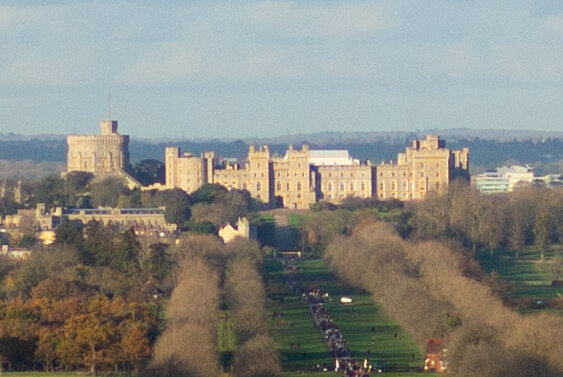
Here we have the fastest three stopped down 2/3 or 1/2 of a stop and the rest of the fast ones wide open. We’ll see the F2 lenses in the next series.
The Nokton 1.1 really cleans up its act, with spades of contrast coming in compared to wide open. Great detail recorded as well. The Nokton 1.2 gains a little bit, but the 7Artisans seems worse here: just mush. I was very careful with focusing for the first shot, but I haven’t refocused any of the lenses for the subsequent stopped down shots: is there a detectable focus shift even at this distance? It’s a Sonnar design after all! I have no idea. The rest of the bunch is starting at wide open here: the TTArtisan 1.4 is a bit soft; the Sonnar 1.5 is slightly better, and the Nokton 1.5 siblings seem even in detail rendering but the version II has a greener cast and a hint of magenta fringing, which I can see in some other lenses, but all are doing great for that. The Summilux 1.4 is already impressive. And it better be: it costs 3.5 times the second most expensive lens among these 8!
F2




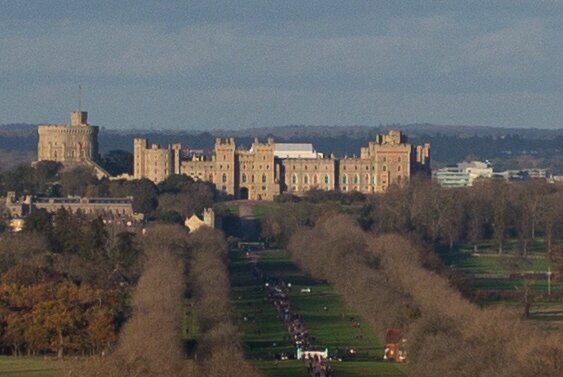





All lenses are represented now. The Nokton 1.1 and Nokton 1.2 are sailing, the 7Artisans is still mushy. One thing that I would like to draw your attention to: for anybody that claims that micro-contrast is not a thing, please have a look at the Summilux image and then everything else. Look at the tonal detail in the stone-work of the castle walls, the richness in colour and shading hues. Then look at the other images, no matter which. Let’s say the Nokton 1.2: great detail as in sharpness, but none of that tonal transition visible in the Summilux 1.4 shot. That is micro-contrast. It is a thing. It exists, and it makes a difference…probably! Let’s not forget that these are extreme enlargements. But the higher amount of tonal hues can render more tri-dimensionality in some subjects.
Moving on, the Nokton 1.5 is a close second to the Summilux 1.4, whereas the Nokton 1.5 II, as well as the TTArtisan 1.4 and the Sonnar 1.5, are less sharp. The Sonnar is also slightly less contrasty.
A big surprise for me is the Summicron F2 performance: quite fuzzy, mushy. The Planar F2 does way better here, with more contrast as well. But I have to say that while focusing the Summicron F2 I found myself thinking that somehow this lens is not quite reaching infinity at the mechanical stop of the focus ring. It looks like it just doesn’t get all the way there. Looking at the full frame of its wide open infinity shot actually confirms my initial impression: I can see that the sharpest area is around 400-500m closer to the camera! Here is a crop, with the exposure brought up to get a better view in the darker portion of the frame:
The plane of focus seems to lie between the two red lines. This copy of the Summicron F2 has a problem, and it’s definitely hindering its performance in this test. As we will see, it will be doing its job nicely in every other test, also because I used the EVF to focus in all tests to keep consistency across lenses. Having said that, it’s spot on with the rangefinder at closer distances.
F2.8








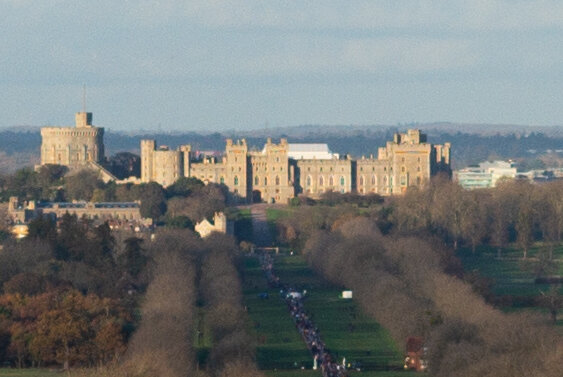

The Nokton 1.1 is quite impressive: it’s true that it is one stop faster and it’s now three stops down from wide open against two for its 1.5 siblings, but it has a more defined image than both Nokton 1.5 I and II. We’ll see the rest of the frame how it behaves, but remember it’s a spherical design against two newer generations of aspherical designs. Speaking of the two smaller Noktons, the Nokton 1.5 II seems to be still lagging behind its predecessor ever so slightly, although it’s still ahead of the TTArtisan 1.4. The Sonnar 1.5 is now worse than at F2 - focus shift? The Summicron F2 has improved but isn’t great yet, although the focus field between the two red lines as above is getting sharper. The best of the bunch are the Summilux 1.4 followed extremely closely by the Nokton 1.2 and a great looking Planar F2, which has only started stopping down. The 7Artisans stays mushy.
F4

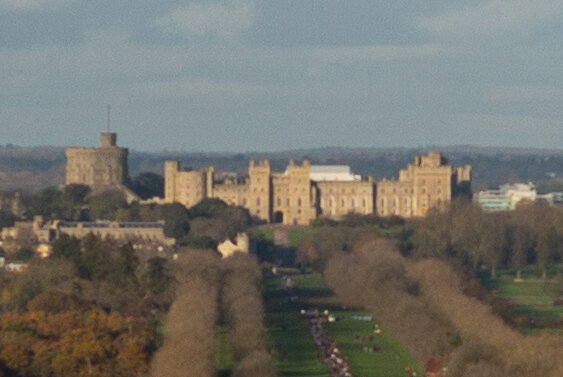

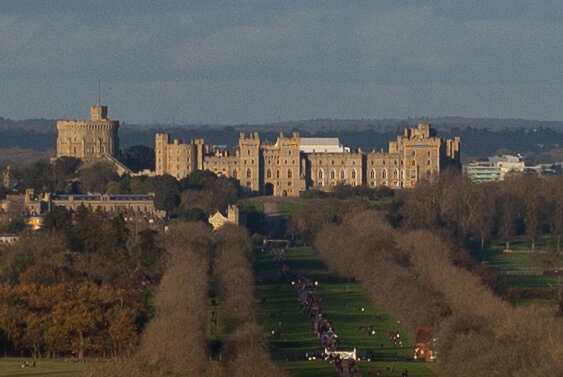






More of the same from the 7Artisans 1.1, just a lot of mush. The Nokton 1.2 shows more micro-contrast than the Nokton 1.1 but they are on par for the amount of detail. The Nokton 1.5 siblings are showing a similar performance but they are still lagging behind their faster brothers in detail. The Sonnar 1.5 is roughly the same at F4 as it is at F2.8: soft. The TTArtisan 1.4 is now very sharp but hindered by the appearance of Lateral Chromatic Aberration (LaCA) that produces green and magenta fringes around finer details. The Summilux 1.4 is playing in its own league as usual, but what surprises me is that the Summicron F2 ha caught up to it! Notwithstanding the focusing issue, the two Leica are the only ones showing clearly and with definition the window frames - not the stone ones, the wood ones! Have a look: the only difference is a hint of LaCA in the Summicron F2, where the Summilux 1.4 shows none (it is an APO design after all). The Planar F2 trails closely behind the Summicron F2, but is not quite there with the detail.
F5.6
I thought about skipping this aperture, but given that some lenses are still showing lack of detail I thought it would be interesting to follow the changes stop by stop till F8. After that diffraction will start to set in and there won’t be much improvement, so I won’t be showing any shots for smaller apertures.

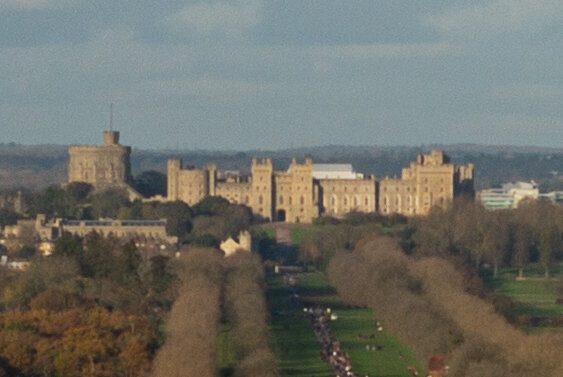








I’ve lost hope for the 7Artisans 1.1. The Sonnar 1.5 is also quite soft. The Nokton 1.1 has peaked already, it’s not improving anymore but it’s already looking great: it shows a similar amount of detail to the Nokton 1.2 but without any LaCA, which the 1.2 has traces of. The TTArtisan seems indistinguishable from the Nokton 1.2 here. The Nokton 1.5 II might be showing a tiny amount more detail than the Nokton 1.5. The Summicron F2 is so sharp my eyes bleed, it seems to be the best at this point, even above the Summilux 1.4 and certainly better than the Planar F2.
F8










Eureka! An improvement on the 7Artisans at last! It’s less mushy! But still no fine detail. The Sonnar 1.5 is also starting again to show decent detail. The Summilux 1.4 might be showing an onset of diffraction. Every other lens is not really different from F5.6. The Summicron F2 is the best of the bunch.
Here is a summary grid with all the images together:
I would advise you to remember the fact that the images I commented on are enormously enlarged. You can click the above grid and zoom in to have a better look, but keeping it at its size gives you a much better understanding of what you would see on a real image, without pixel peeping. Should you wish to pixel peep anyway click here to have a look at it on Flickr, where the image is less compressed and you can enlarge it more.
Mid-frame crops
These images were shot from the same spot, same focus point taken in the centre wide open and then reframed to get the castle to fall in the lines of thirds intersection.
We’re starting again with the three fastest lenses wide open.
F1.1/1.2



The Nokton 1.1 impresses me: very low contrast, spherical aberration, but decent detail and sharper than the Nokton 1.2, that has much better contrast and less spherical aberration. The 7Artisans is just horrible, even showing a healthy amount of tangential astigmatism.
F1.4/1.5
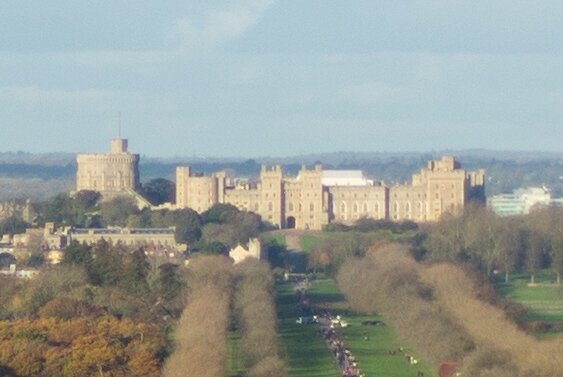







The Nokton 1.1 and Nokton 1.5 are the best here, followed by the Summilux 1.4 (the “mid-frame dip” in sharpness is renown in the Leica community for this lens), then the Nokton 1.2 on par with the Nokton 1.5 II. All these lenses have good to decent amount of detail in mid-frame. The Sonnar 1.5 is just soft, the TTArtisan is even worse (its mid-frame dip is dramatic!) and the 7Artisans is still awful, just a smear. The Nokton 1.1 keeps impressing me.
F2
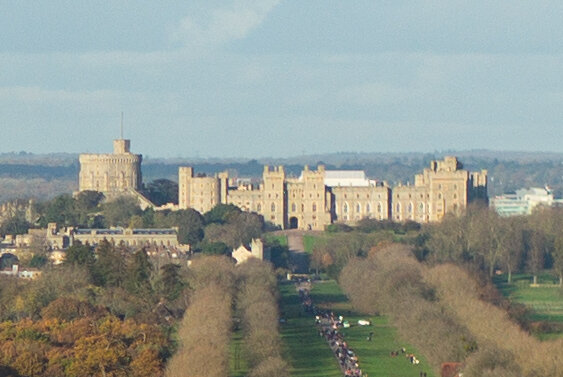









The best of the bunch at this aperture is the Nokton 1.1. No question. Close behind and at the same level of detail and contrast are the Nokton 1.2, Summilux 1.4 and the Nokton 1.5, which still records slightly more detail in mid-frame than its successor, the Nokton 1.5 II, which has just a hair more detail than is recorded by the wide open Planar F2. The TTArtisan is still soft, more so than the Sonnar 1.5. The Summicron is not putting on a good show and we expect it, given that it’s not focused at infinity. I would have loved to see a properly calibrated lens here. The 7Artisans? Blah.
F2.8


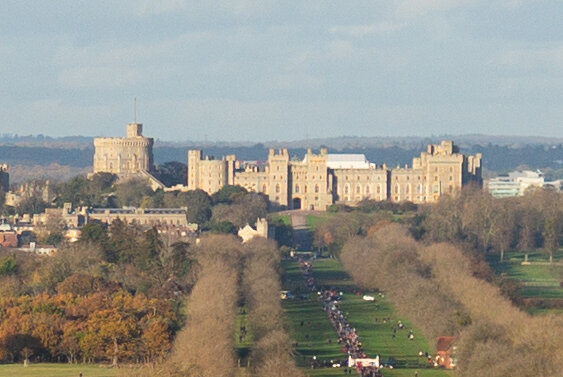







I could copy the paragraph above, it’s exactly the same story with a little more detail. The Nokton 1.1 still the best of the bunch, but this time the Nokton 1.2 is possibly slightly better than the Summilux 1.4, which is on par with the Nokton 1.5. The Nokton 1.5 II, has improved but hasn’t reached its older brother yet. The TTArtisan 1.4 is still soft and worse than the Sonnar 1.5, the Summicron F2 image is already closing in with the TTArtisan 1.4 and the Planar F2 has improved. The 7Artisans 1.1 is still utterly awful.
F4

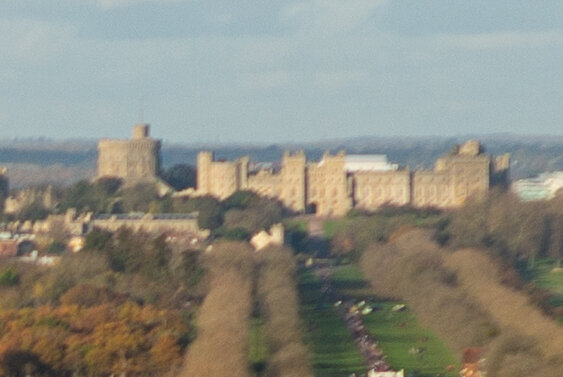








At F4 we find four outstanding performers that seem at the same level to my eyes: Nokton 1.1 (again!), Nokton 1.2, Summilux 1.4, Planar F2. The only difference on the Nokton 1.1 is a barely perceptible trace of LaCA in some windows on the right side. The Nokton 1.5 is now less detailed than the Nokton 1.5 II, which has leapt forward in definition, although it shows some LaCA that the predecessor doesn’t have (look at the left side of the castle itself). Sonnar 1.5 and Summicron F2 are showing the same amount of detail, although far from crisply, with the Leica showing LaCA to which the Zeiss seems immune here. The TTArtisan 1.4 is still softer than all the others except for the 7Artisans 1.1, which seems to have diminished the smearing effect somewhat to achieve an awful rendition instead an utterly awful one. It’s a step forward, at least.
F5.6

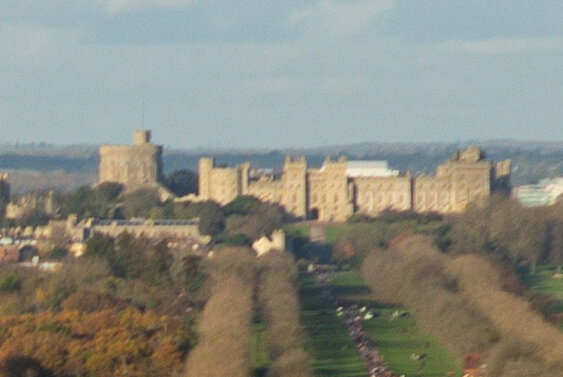

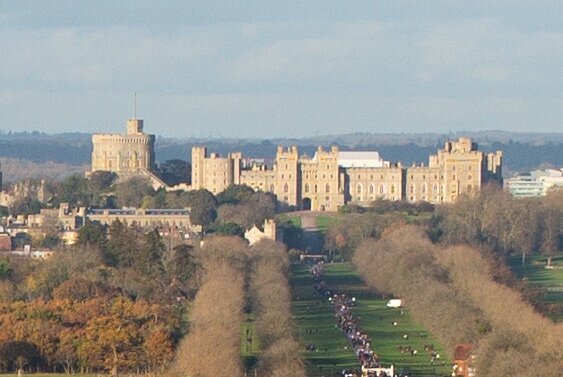






Now we have six lenses that are outstandingly good: Nokton 1.1, Nokton 1.2, Summilux 1.4, Nokton 1.5 II, Summicron F2, Planar F2. I hardly see any differences than can be called significant. The TTArtisan is now almost as good as the Nokton 1.5, which has stopped improving. The Sonnar 1.5 is just a hair behind. The 7Artisans is really soft and smeared but slightly less awful. But let’s not get excited here, still awful it is.
F8










Four outstanding here compared to the rest: Nokton 1.1, Nokton 1.5 II, Summicron F2, Planar F2. We are nitpicking here but I have to say that. The Nokton 1.2 and the Summilux 1.4 are a hair less crisp but slightly better than the TTArtisan and the Nokton 1.5, which are now on par. The Sonnar is less crisp but looking pretty good. The 7Artisans as usual plays in its own league, and not in a good way, but for the first time it offers some discernible detail in that blur: it only took closing down 5 and 2/3 stops to get any, and it’s still blurry.
Here is a summary grid with the images. Click here for a better look.
Corner crops
Again same spot, same focus in centre and reframed to place the castle in the far upper right corner.
F1.1/1.2



We can spot straight away what a difference there is on the aspherical Nokton 1.2 for detail and contrast. There is an image in that corner, and it would be usable for a decent sized print. Again, remember how extreme these enlargements are. The Nokton 1.1 has detail there but it’s smeared by spherical aberration and a good amount of mainly sagittal astigmatism and some coma. The 7Artisans has gone into impressionism, with just an outline of what might lurk in that corner. Notwithstanding the complete mush, we can still spot sagittal and tangential astigmatism in spades in the form of arrows where white specks (also called people) should be on the road. I am not forgetting that we are in the far corner here, but the difference is quite substantial.
F1.4/1.5


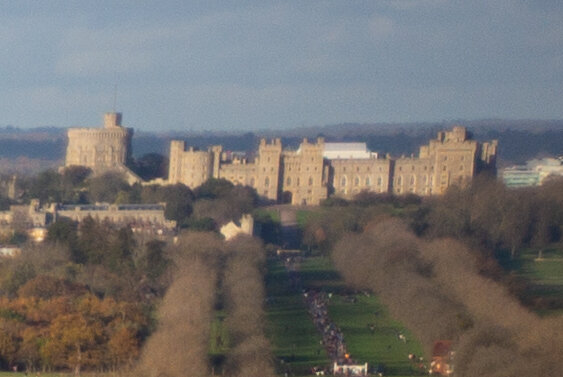


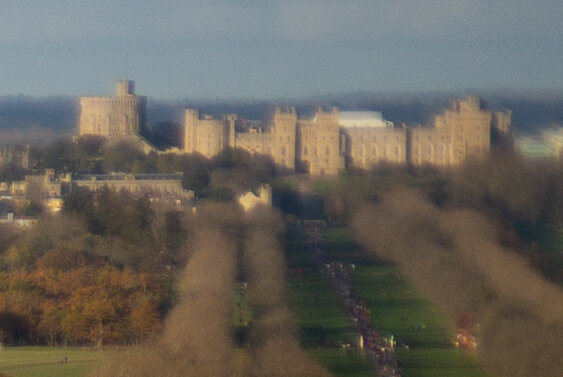


We are really spoiled nowadays with the quality of these lenses. Look at the far corner of that Nokton 1.5 II! Look at the right side of the castle: it’s very close to the actual end of the frame. This is wide open. Its performance is a hair better (on that right edge of the castle) than the Summilux 1.4 and noticeably better than the Nokton 1.2, which has already been stopped down a little. We can see a strong fall-off in definition on the Nokton 1.5 towards the right edge. The Sonnar 1.5 is not that sharp but it seems not to have particular coma or astigmatism there, of which the TTArtisan 1.4 shows a big amount. The Nokton 1.1 is faring better than the TTArtisan 1.4. The 7 Artisans? A cheese melt.
F2










The Nokton 1.5 II and the Summilux 1.4 are even now for detail, but the Leica lens, supposedly and apochromatic (APO) design, shows some LaCA that the Voigtlander seems to avoid in favour of some spherical aberration. I don’t think the Nokton 1.2 is showing any less detail than the other two, just less contrast. The Nokton 1.5 is coming along slowly, that right edge still struggles. The Sonnar 1.5 is still fuzzy and very similar to the Nokton 1.1. I am surprised to see that the Summicron F2 shows almost as much detail as the best of the bunch here, given the struggle with the focus point not being at infinity at all: do we have quite some field curvature here? The Planar F2 has a hair more detail but struggles with a bit of spherical and Longitudinal Chromatic Aberration (LoCA) in the form of slight red halos around high contrast edges. If you want to understand what tangential astigmatism does to an image towards the corners have a look at the TTArtisan 1.4 image, it’s a perfect example. Not a great performance. The 7Artisans is still running its impressionism and arrows show.
F2.8



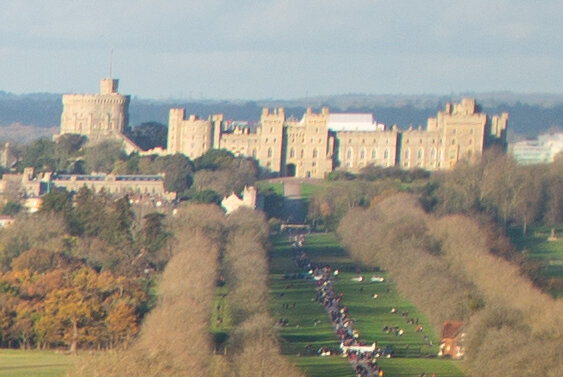






I hardly see any differences between the Nokton 1.2 and the Nokton 1.5 II: they look great and slightly better than the Summilux 1.4, which shows a slight degradation on the right side of the castle and a little LaCA. The Nokton 1.5 just doesn’t pick up its game on the right edge, but even the tower on the left is not as defined as with its successor. The Sonnar 1.5 has quite a few aberrations showing here that degrade the image, making it a bit fuzzy overall. The Nokton 1.1 is starting to get some traction on the tower but still slipping on the right edge. The Summicron F2 is now perceptibly better than the Planar F2 but not as good as the best here. The TTArtisan is improving slightly but it’s not good. The 7Artisans is now managing to let us intuit the presence of windows in the building. Wow!
F4
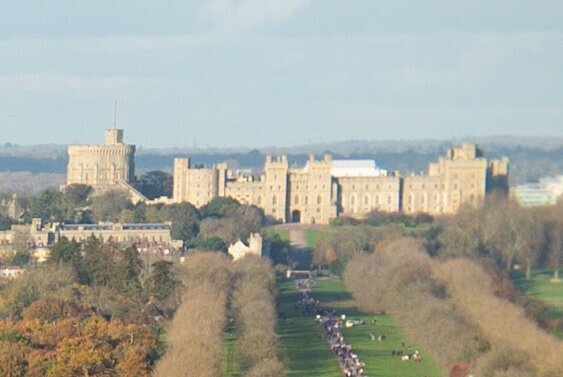
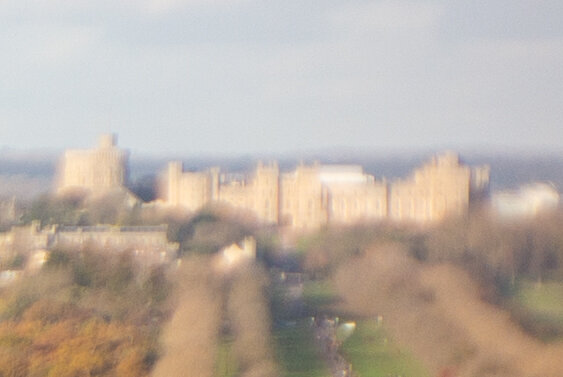








The Summilux 1.4 has leapt forward now, and is even with the Nokton 1.5 II. The Nokton 1.2 has barely improved from F2.8. The Planar F2 is now visibly better than the Summicron F2, although still showing some spherical glow, which has dramatically diminished in the Sonnar 1.5 image. The Nokton 1.1 is almost indistinguishable from the Nokton 1.5, they both lag behind on the far right. The TTArtisan is not great yet, and the 7Artisans might let you count most of the windows if you pay attention.
F5.6










The Nokton 1.2, Nokton 1.5 II and the Summilux 1.4 sow an outstanding amount of detail with great contrast, but the Leica lens stands out for two reasons: it has a tiny more detail at the highest frequencies and it shows a little LaCA. The Nokton 1.1 looks really good and is better than the Nokton 1.5 and Planar F2, that are equal now, but all three are eminently printable up to the corners now. The Summicron F2 is a bit softer than its Zeiss competitor. The Sonnar 1.5 has now worsened, and is bested by the TTArtisan 1.4 which is still not brilliant. Guess what? The 7Artisans 1.1 is still a disaster.
F8










Keeping in mind that the usual three, the Nokton 1.2, Summilux 1.4 and Nokton 1.5 II are the best out there, most lenses are now looking just great. The TTArtisan 1.4 is now great as well (after stopping down 5 stops!). The Sonnar 1.5 doesn’t look good though. The Summicron F2 is not crisp, and considering the incredible performance on the mid-frame and especially centre from F4 I would infer that the corner is not its strength at infinity. But I would love a calibrated one to be sure! The 7Artisans…oh well. Still awful.
Let’s have a look at the grid for the corner crops (as usual, click here for larger):
A summary for the infinity test
Disclaimer: all the comments and this summary for the infinity test have to be PUT INTO CONTEXT. THESE CROPS ARE EXTREME, on larger computer screens they will correspond to a 400% enlargement! These observations will be less relevant for prints up to A4 sizes, becoming more important when printing large. Please keep this in mind.
It’s so interesting to see the strengths and weaknesses of each design (and no strengths at all for one in particular!). I am really impressed by the Nokton 1.1 in the centre and mid-frame, I was expecting a lot worse from it, but it’s not good in the corner. The Sonnar 1.5 is a 1932 design, mostly unmodified, and it shows: while reasonably sharp in the centre wide open, it gets worse from there until F8. I think this might be due to its fabled focus shift. The mid-frame gets decent at F5.6, the corner never does. The Nokton 1.5 and Nokton 1.5 II have different strengths here: the new one is amazing in the corners, the older one rocks in mid-frame, both are great in the centre. The Nokton 1.2 is a great performer in the centre, but it takes a couple of stops to get really good in the corner. It shows a slight mid-frame drop in resolution. The most balanced lens, almost constantly at the top, is the Summilux 1.4, and it better be at that price. Having said that it struggles in mid-frame, a renown foible of this lens among Leica M aficionados, and it does show a healthy amount of LaCA in the corner, even though it is unofficially an apochromatic lens: all the aspherical Noktons, the Planar F2, the TTArtisan 1.4 and even the Nokton 1.1 fare better with LaCA in the corner. I am thoroughly disappointed by the problem with my Summicron F2 sample, it is not allowing me to form a real opinion on it, although it’s amazing in the centre already at F4 even if not focused at infinity - incredible. Like its Summilux 1.4 sibling, it shows a healthy amount of LaCA but on a different wavelength: it is mainly yellow, while the other Leica shows the classic green/magenta fringing. The Planar F2 is touted as a top performer and it puts on a good show here, but I don’t see any advantage in its slower design for the closed down performance apart for the mid-frame region. Plenty contrasty though! The Chinese lenses are far, far apart: the 7Artisans 1.1 simply doesn’t know what sharpness at infinity means, while the TTArtisan 1.4 is not optimised for infinity apparently, lagging behind all the best performers, but getting quite some sharpness across the frame at F8.
Minimum Focusing Distance (MFD) and magnification
In this setup I moved my tripod as close as possible to get a sharp image with the lens focused at MFD. I might have fine-tuned the focus slightly within 1cm of distance to ensure a precise plane of focus. All lenses in the test have a specified MFD of 0.7m apart from the Nokton 1.1 at 1m and the Sonnar 1.5 at 0.9m. Each lens was refocused thoroughly at each aperture: I had to move some of them back quite a bit because of focus shift when refocusing and start the series again for that lens: keep that in mind, the lenses with severe focus shift will have lost a little magnification because kept slightly further than true wide open MFD. On the other hand, shooting them wide open at MFD is indeed asking for trouble: it will be the worst performance of the whole range for most lenses. But not all! All images are equalised for white balance.
The main subject is a Leica M typ240 battery, which measures 55x37mm. Here is the full setup with the Nokton 1.1 and the Summilux 1.4, the ones with the furthest and the closest MFD:
The MFD on the Nokton 1.1 is 1m, on the Summilux 1.4 it is 0.7m. What a difference! What you see in the lower corners of the Nokton 1.1 shot is the ring light I shot through.
The images presented in the following series are 100% crops.
F1.1/1.2



The Nokton 1.1 shows a good amount of longitudinal chromatic aberration (LoCA), visible as magenta fringes on the book title and inside borders of the battery label, blue fringes outside the label and around the symbols, but quite a lot of detail and a decent amount of contrast. The 7Artisans 1.1 has much less LoCA (it’s there on the book title although not visible here) but a lot more spherical aberration that is softening the detail that is actually there. Contrast is much lower. The Nokton 1.2 is actually less sharp than its 1.1 counterpart, even with the much higher magnification. There is a visible glow from spherical aberration and quite some green-magenta LoCA on the edges of the label and on the symbols.
F1.4/1.5


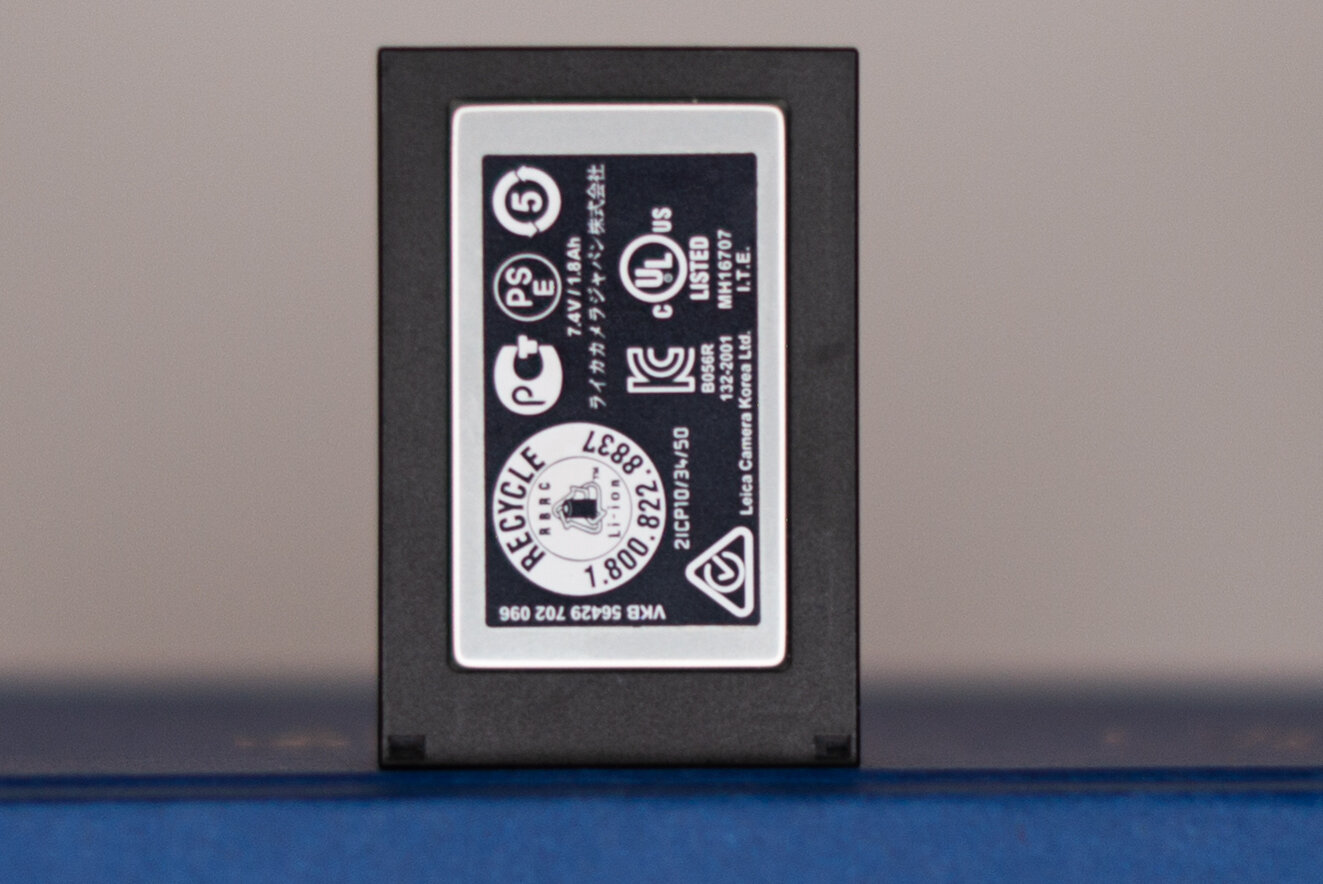


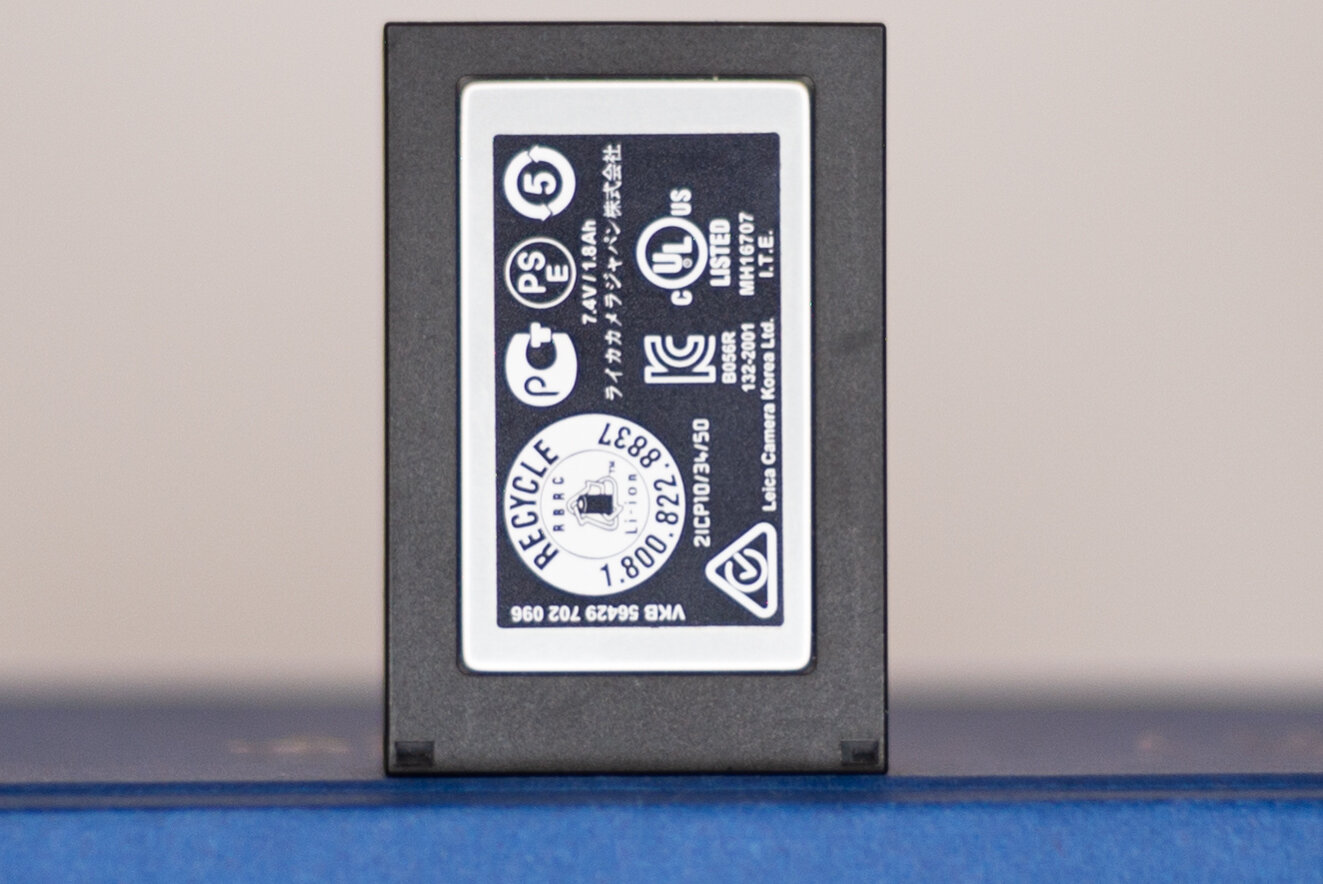


All three lenses above improve visibly already: the Nokton 1.1 still has a little LoCA, the 7Artisans 1.1 has lost a lot of spherical aberration but is not particularly sharp. The Nokton 1.2 has almost eliminated the LoCA. The Summilux 1.4 is astonishing already: look at the amount of detail! There is a barely visible smear towards the upper left corner: is that bad positioning of the battery? The real surprise though comes from the TTArtisan, which is almost on par with the Leica but without the use of a floating lens group. Impressive. There is just a small amount of LoCA visible. Although the Nokton 1.5 image is nothing to write home about, it’s much better than the Nokton 1.5 II, which has just a little more sharpness that is degraded by a lot more green-magenta LoCA and some spherical aberration. The Sonnar 1.5 has just slightly more detail than its 7Artisans cousin (same Sonnar lens design!) but shows an inordinate amount of LoCA, tinging every detail with red and blue.
I would like to draw your attention to the different magnification levels even between lenses that are similarly specified at 0.7m MFD. The Summilux is the one with the closest actual MFD, definitely less than 0.7m, and the 7Artisans seems to be the one with a smaller magnification. The actual focal length plays a part here, but physically the Leica lenses (both of them) went noticeably closer than all others.
F2










The Summilux 1.4 and the TTArtisan 1.4 are even to my eyes for the amount of detail and contrast, with the Chinese lens showing a hint of LoCA, but I’m nitpicking. Wow! The Summicron F2 has the same magnification of its Leica sibling and already the same detail and contrast as the Nokton 1.5 II: the difference is a bit of red LoCA on the Leica and traces of green LoCA on the Voigtlander, which is now much better than wide open and definitely better than the Nokton 1.5 and Nokton 1.2. The latter two are roughly the same: a bit soft. The Planar F2 is far from the Summicron F2 performance and shows a little softness and LoCA. The 7Artisans 1.1 has a tiny bit more detail than the Nokton 1.1 but just because of its closer focus distance: if we enlarge the Nokton 1.1 image to get the same magnification they are almost even. They differ for the colour of their LoCA: green-magenta for the Chinese lens, red for the Japanese one. Finally the Sonnar 1.5 is the softest of the bunch, although it has thoroughly cleaned up its act with the LoCA.
F2.8










The Nokton 1.1 seems sharper on the book title than on the subject: did I make a mistake in refocusing? I think so because the book title is very sharp and devoid of aberrations, while the subject is a bit softer indeed! The 7Artisans 1.1 is sharp and contrasty: I’m impressed! All lenses but the Sonnar 1.5 are now sharp, with the Summilux 1.4, TTArtisan 1.4, Nokton 1.5 II and Summicron F2 being blistering sharp, the Nokton 1.2, Nokton 1.5 and Planar F2 decently sharp. The Sonnar 1.5 is still a bit softer and can’t shake the LoCA.
F4

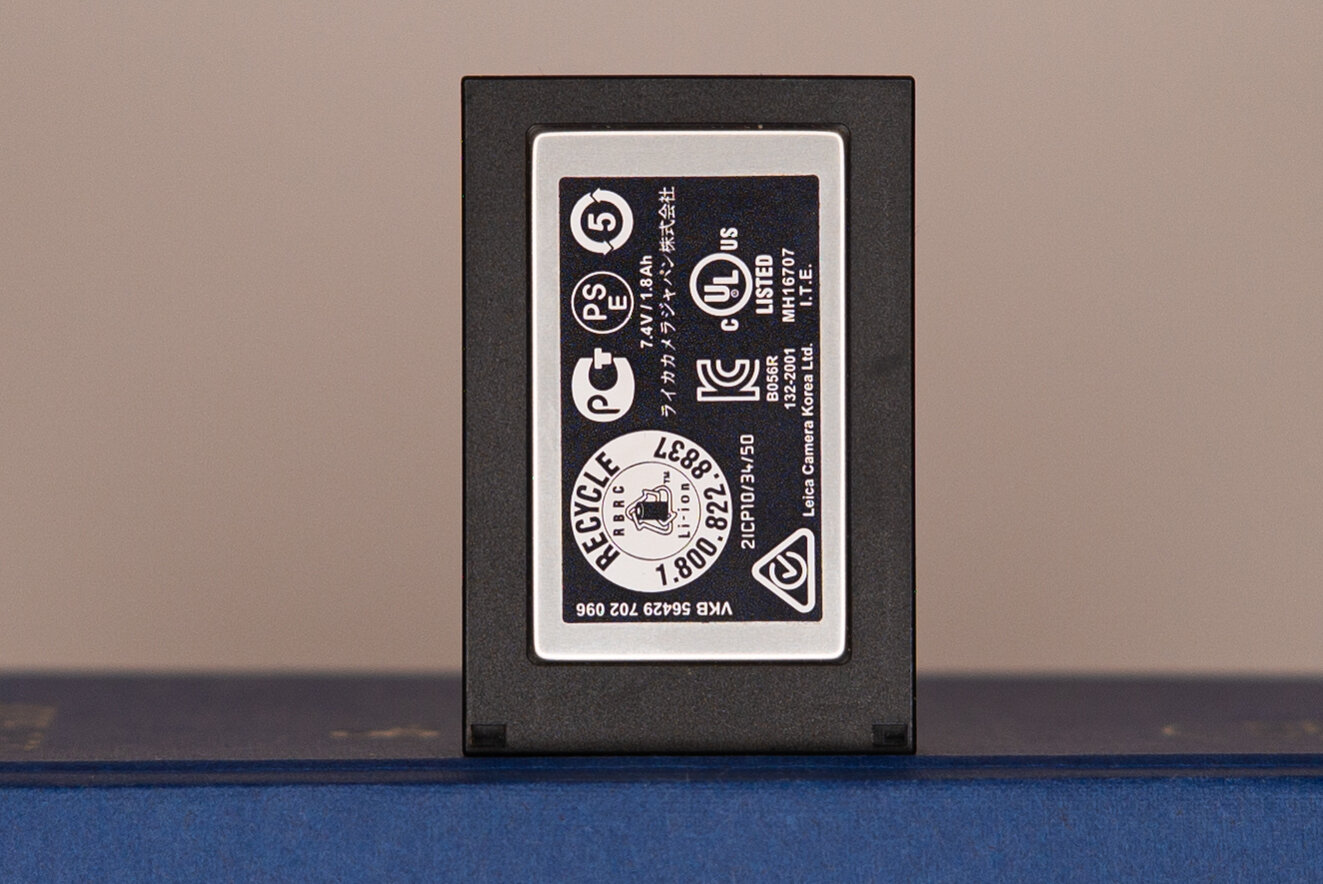





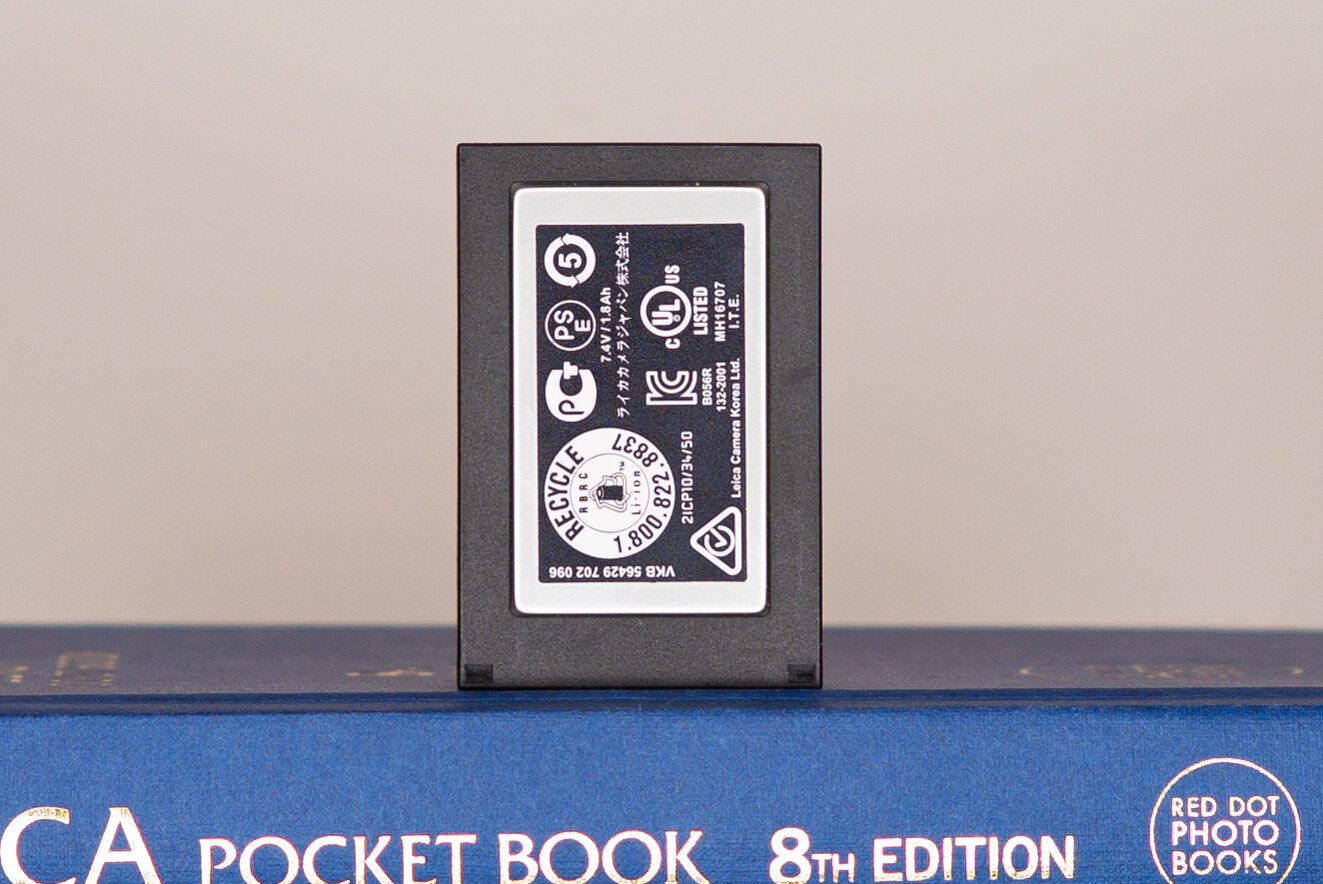


Not much to say here anymore: all images are sharp and detailed with good contrast, with the Summilux 1.4, TTArtisan 1.4, Nokton 1.5, Nokton 1.5 II and Summicron F2 a notch above the others. Even the Sonnar 1.5 is good now, although still not free of LoCA. We will skip F5.6 and F8, the lenses are already so good that the changes stopping down are imperceptible. Out of interest, the Sonnar 1.5 loses the LoCA at F8 finally, but the sharpness doesn’t change.
Here is the comparison grid with all the shots. It’s especially interesting to see the difference in magnification between the different lenses. Click here for larger.
A summary on MFD and magnification
The Leica lenses just rock in this test: the highest magnification overall, same for both, and outstanding detail and image quality right off the bat. The Nokton 1.5 II is not that great wide open, but from F2 onwards it plays with the Germans. The TTArtisan 1.4 is even better, going neck to neck with the Summilux 1.4 almost at the same level from wide open. That is impressive. The Nokton 1.1 is giving plenty of detail but suffers a bit from the long MFD and is trailing the Nokton 1.2 and Nokton 1.5, which are good but not outstanding in this company. The 7Artisans 1.1 is finally showing that it can achieve sharpness, but it needs to stop down to F2.8 to get there. The Sonnar 1.5 is, again, not in its environment. It can record good detail from F4 but needs F8 to get rid of LoCA. Finally the Planar F2, which is chugging along contentedly always one stop (or step) behind the Summicron F2. This means great performance but not quite like the Leica.
This section concludes Part 1 of this comparison. In Part 2 we will look at more specific optical characteristics and defects of each lens. Click here or below to go to Part 2.























































































